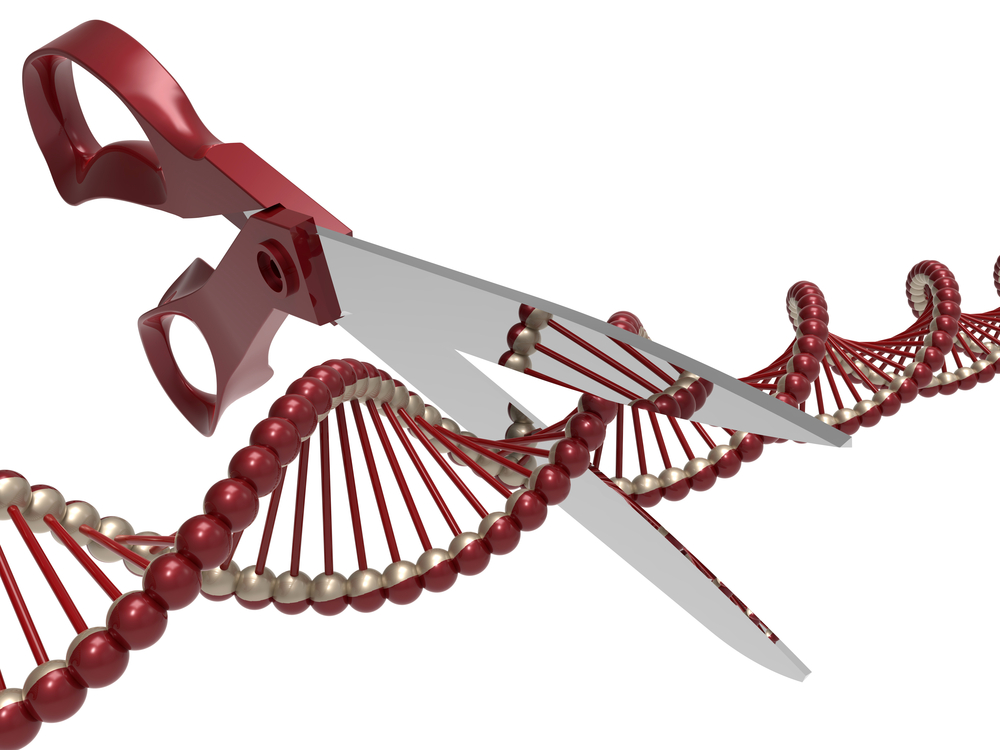Gene Editing System Revamped to Target RNA Aggregates Found in Inherited ALS

Researchers have found a way to break down aggregated RNA molecules that cause diseases such as certain inherited forms of amyotrophic lateral sclerosis (ALS).
As the technique has the potential to treat several diseases which currently lack treatment options, the research team from the University of California, San Diego (UCSD) made sure to engineer the new system so that it could be delivered to specific tissues with non-infectious viruses.
The method builds on a well-known gene-editing system, called CRISPR–Cas9, but was adapted to target RNA instead of DNA. The new method is called RNA-targeting Cas9, or simply, RCas9.
“This is exciting because we’re not only targeting the root cause of diseases for which there are no current therapies to delay progression, but we’ve re-engineered the CRISPR-Cas9 system in a way that’s feasible to deliver it to specific tissues via a viral vector,” the study’s senior author, Gene Yeo, said in a press release. He is a professor of cellular and molecular medicine at UCSD School of Medicine.
The study, “Elimination of Toxic Microsatellite Repeat Expansion RNA by RNA-Targeting Cas9,” published in the journal Cell, described how the team rebuilt the Cas9 system to find and chop up disease-causing RNA molecules.
In gene editing, the CRISPR–Cas 9 system uses an RNA probe that matches a specific stretch of DNA. Once bound to the right gene, the Cas9 enzyme cuts the DNA, which then can be inactivated or edited. The new system targets RNA, and chops it up instead of editing it.
RNA, which is largely composed of similar building blocks as DNA, has numerous roles in a cell. For instance, it is used to take a copy of a gene to provide instructions for the cell’s protein-making machinery.
At times, however, RNA molecules start accumulating what researchers call microsatellite repeat expansions. These are stretches of repeat RNA “letters” that disrupt the normal activity of the RNA. When found in messenger RNAs, they prevent necessary proteins from being made.
An abnormal sequence also makes the RNA accumulate in cells, disrupting other cell operations. This can be seen in ALS that runs in families, and in diseases such as myotonic dystrophy and Huntington’s.
In ALS, such repeats are found in the C9orf72 gene, and cause about a third of familial ALS cases, or those that run in families, according to the ALS Association.
Testing the new tool in lab-grown cells derived from ALS patients with such mutations, the team showed that RCas9 could eliminate at least 95 percent of accumulated RNA, seen as dense clusters, or foci, in the cells.
They also discovered that using RCas9 freed proteins that normally bind to RNA in cells. When abnormal RNA starts accumulating in a cell, these proteins get tied up interacting with the aggregates, instead of binding to their natural targets. Researchers said that treated patient-derived cells eventually resembled healthy cells.
For the system to be useful as a human therapy, it needs to fit into a virus — the most common way to deliver gene therapy. Normal Cas9 is too large to fit into the virus typically used. The team solved the issue by removing parts of the Cas9 enzyme required for cutting DNA, making the enzyme small enough to fit.
Yet, many more questions need to be answered before the method can be tried in patients.
“The main thing we don’t know yet is whether or not the viral vectors that deliver RCas9 to cells would elicit an immune response,” Yeo said. “Before this could be tested in humans, we would need to test it in animal models, determine potential toxicities and evaluate long-term exposure.”
The group has launched a company, Locana, that will work on preclinical-trial development of the method with the aim of bringing it to patients.
“We are really excited about this work because we not only defined a new potential therapeutic mechanism for CRISPR-Cas9, we demonstrated how it could be used to treat an entire class of conditions for which there are no successful treatment options,” said David Nelles, PhD, one of two lead study authors.
“There are more than 20 genetic diseases caused by microsatellite expansions in different places in the genome. Our ability to program the RCas9 system to target different repeats, combined with low risk of off-target effects, is its major strength,” added Ranjan Batra, PhD, the study’s other lead author.






